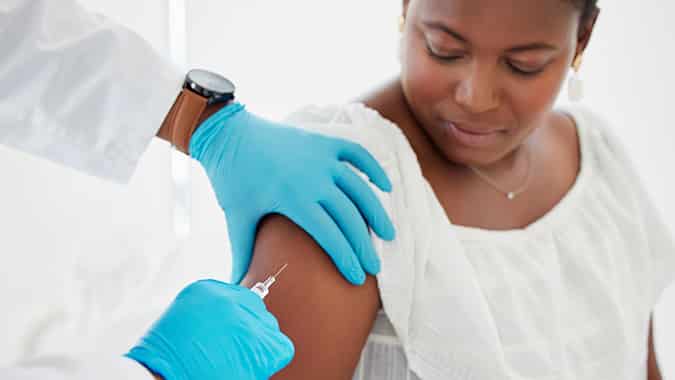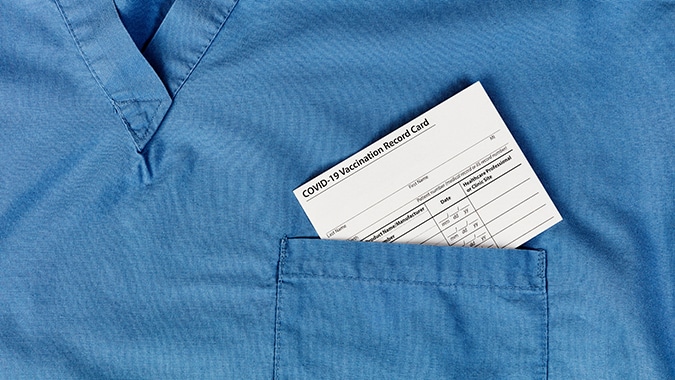There are four main programs in the CARES Act intended to assist both large and small businesses respond to the economic conditions caused by COVID-19. These programs include loan and grant programs, expanded unemployment provisions, as well as numerous tax benefits. The intention of all these programs is to incentivize employers to retain their employees for the duration of the COVID-19 emergency. There are also appropriations to each state and, depending how it is spent, can provide further business assistance in the future at the state or local level.
Small Business Administration
Payroll Protection Program - The Payroll Protection Program (“PPP”) within the Small Business Act (SBA) to encourage businesses to retain their employees and to help pay for certain other operating expenses. This program provides loans, with significant loan forgiveness (effectively a grant), intended to keep employees on the payroll, and businesses in operation, for eight weeks.
- $350 billion appropriated;
- Covered period runs from February 15, 2020 through June 30, 2020;
- Paycheck Protection Loans;
- Payroll costs do not include that amount of wages for an employee above $100,000;
- Can borrow for payroll, costs, continuation of health benefits, employee compensation, rent, utilities, interest of debt occurred prior to covered period;
- Must have under 500 employees;
- Waives personal guarantee and other requirements;
- SBA guidance is setting term of loan at 2 years and 1% (10-year loans with interest not to exceed 4% in law);
- May seek possible deferment from six months to one year;
- Loan Forgiveness of Paycheck Protection Loans;
- Can forgive sum of payroll costs, mortgage interest, rent, and certain utilities for 8-week period beginning on date of loan through June 30, 2020;
- Must verify costs in application;
- Forgiveness is not taxable income;
- Forgiveness will be reduced proportionately if workforce during the 8-weeks or reduces wages (employees under $100,000) by more than 25% during this period. If employees had previously been furloughed, they can be brought back up until June 30, 2020 and if they are paid there will be no penalty on the forgiveness.
Payroll Protection Program FAQ
Does a business have to demonstrate that they have been impacted? There is no need to show that a business has been impacted by the COVID-19 pandemic or have lost money/business revenue because an impact is presumed that “the uncertainty of current economic conditions makes necessary” the need for the loan.
Who is eligible? Businesses that have fewer than 500 employees are eligible. The PPP was also expanded to allow self-employed individuals, independent contractors, and sole proprietors to be eligible. Non-profits that are designated as a 501(c)3 are eligible.
What about franchises, hotels and restaurant chains? Certain affiliated businesses, such as: franchises, hotels and restaurant chains, will be able to determine their number of employees on a site-by-site basis thus allowing many of these businesses eligible for the PPP loans.
How much can a business get in a loan? The loan will be the lesser of 2.5 times the previous year’s average monthly payroll costs or $10 million. Certain other SBA loans previously obtained can be rolled into this loan.
What can the money be used for? The money can be used for payroll costs, the continuation of health benefits, employee compensation, rent, utilities (including internet), and interest incurred on debt prior to the loan. The period for which these expenditures can be made is between February 15, 2020 and June 30, 2020.
How much and for what can a loan be forgiven? Any monies extended for the 8-week period after the loan is approved for payroll costs, debt interest, rent, and utilities will be forgiven.
How do you apply? Applications may be made directly to the SBA or to an approved local bank. The network of banks eligible to process loans is being greatly expanded and you should check with your local bank to see if they are participating. Applications will be accepted beginning April 3, 2020.
Economic Injury Disaster Loans (EIDLs) - This existing program has been expanded to provide loans to not only businesses with fewer than 500 employees, but also to sole-proprietors, independent contractors, and ESOPs.
Relationship to PPP: A business can elect to apply for loans from both programs but cannot borrow for similar purposes from each. An analysis should be made of eligible loan criteria for both programs to avoid conflicts. Unlike the PPP loans may only be provided by the SBA or previously approved lending institutions.
- Eligible for $10,000 immediate emergency grant if apply for disaster loan to maintain payroll and it does not have to be repaid even if grant is denied;
- Loans may be up to $2 million;
- No personal guarantee is required if the loan is under $200,000.
- Cash contributions for individuals to charities may be deducted “above the line” even if a person does not itemize and takes the standard deduction. Different limits apply to corporate contributions;
Unemployment Benefits
Unemployment benefits have been increased, expanded to persons who normally would not qualify, and extended. They will now be eligible to various business owners who otherwise were ineligible to collect.
- Provides temporary assistance program with unemployment program benefits to those traditionally unable to collect UI (g. self-employed, independent contractors, limited work history);
- Emergency increase in benefits to provide an additional $600 per week over what a state would normally pay for up to four months;
- Provides an additional 13 weeks of unemployment benefits through December 31, 2020 after state unemployment benefits expire if state agrees;
Who benefits? Independent contractors, the self-employed, and sole proprietors who normally would not be able to collect unemployment benefits will now be temporarily eligible for these benefits to the same extent as others who would normally qualify. In addition, the benefits have been significantly enhanced for all recipients.
Application Process: Applicants should apply for unemployment benefits though the New Jersey Department of Labor’s website in the same manner as any other applicant.
Potential Delay in Benefits: Because this is a new expansion of the program dependent on federal spending, there may be a delay from application to when the first payments are made. In addition, New Jersey also does not currently provide unemployment insurance for the first week of unemployment while the federal program does under the CARES Act. New Jersey would have to waive the first week payment delay in order for recipients to take advantage of this provision.
Business Tax Relief
The CARES Act includes various tax relief provisions to allow businesses to take significant tax credits, breaks, or deferrals of payments. Because these provisions involve complicated tax code provisions and application of them will be situation specific, advice from an accountant is recommended. The key provisions include:
Employee Retention Credit: The CARES Act provides eligible employers – including tax-exempt organizations but not governmental entities – a refundable credit against payroll tax (Social Security and Railroad Retirement) liability equal to 50% of the first $10,000 in wages per employee (including value of health plan benefits).
- One year tax credit against employer’s 6.2% share of social security payroll taxes for any business that is forced to suspend or close operations due to COVID-19 but continues to pay its employees;
- Applies if business was fully or partially closed in any quarter in 2020 due to order concerning COVID-19 or if the business was open, it suffered a 50% decrease in gross receipts in any quarter;
- Credit is allowed for each quarter until 80% of receipts have returned;
- Credit for each eligible quarter equal to 50% of the “qualified wages” paid to each employee for that quarter;
- Different provisions apply depending if business has above or below 100 employees;
- Under 100 full-time employees it applies to all employee wages if the business is open or forced to close;
- Over 100 employees applies only to employees not providing services due to COVID-19;
- The credit is provided for the first $10,000 of compensation, including health benefits;
- Applies to wages paid or incurred from March 13, 2020 to December 31, 2020;
- Does not apply if a SBA loan was given.
Delay of Payment of Employer Payroll Tax and Self-Employment Tax:
- Employer’s share of 6.2% social security tax through the end of the year may be paid over the next two years (50% in each year).
Net Operating Loss Rules:
- Temporary repeal of taxable income limitation;
- Losses from 2018, 2019, and 2020 will be permitted to be carried back for five years;
- Losses carried to 2019 and 2020 can offset 100% of taxable income (rather than 80%).
Qualified Improvement Property Fix:
Allows for immediate deprecation allowance of certain “qualified improvement property” (e.g. interior portion of non-residential building) and provides for retroactivity to January 1, 2018.
Other Tax Changes;
- Business interest;
- Capital gains;
- Modification of business interest
- Aviation Excise Tax Suspended
- Excise Tax for Alcohol to Make Hand Sanitizer Suspended
Impact on State Business Taxes
Some of the above CARES Act tax changes on the federal level may impact state business taxes
to the degree the New Jersey conforms to federal; business tax law, so NJBIA is currently
exploring those impacts.
Additional Assistance to Businesses, States, and Municipalities
Emergency Lending to Certain Businesses: Title IV of the CARES Act provides $500 billion to Treasury’s Exchange Stabilization Fund for loans, loan guarantees, and investments in the Federal Reserve’s lending facilities to support states, municipalities, and “eligible businesses,” which include air carriers and US businesses that have not received “adequate economic relief” in the form of other loans or loan guarantees.
The $500 billion is allocated as follows:
- $25 billion in loans and loan guarantees for air carriers;
- $4 billion in loans and loan guarantees for cargo air carriers;
- $17 billion in loans and loan guarantees for businesses critical to maintaining national security; and
- $454 billion for loans, loan guarantees, and investments in support of facilities established by the Federal Reserve to support lending to eligible businesses, states, and municipalities;
- The Federal Reserve programs include the Money Market Mutual Fund Liquidity Facility, the Commercial Paper Funding Facility, the Primary Market Corporate Credit Facility, the Secondary Market Corporate Credit Facility, and the Term Asset-Backed Securities Loan Facility;
- The CARES Act requires the Treasury Secretary to publish application procedures and minimum requirements for loans, loan guarantees, and other investments within 10 days of enactment;
- Loans and Loan Guarantee Criteria:
- The CARES Act gives the Treasury Secretary discretion to make loans and loan guarantees for a duration no longer than five years and at an interest rate not less than prevailing market rates prior to the COVID-19 outbreak. The loans cannot be forgiven;
- In order to access a loan, a business must be US-domiciled and its employees must be predominately located in the United States. The business also must show that alternative financing is not reasonably available;
- For 12 months after the expiration of the loan or loan guarantee, the business will be prohibited from buying back its company stock, paying dividends or making other capital distributions, and reducing its workforce by more than 10%.
Other Relevant Provisions
There are numerous other provisions in the CARES Act that can impact businesses either because of a direct benefit to a specific industry or because of impacts to a governmental entity that could impact services or future revenue needs. Some of the more relevant provisions include:
- $3.44 billion to New Jersey (and certain counties) for COVID-19 response activities which monies cannot be used to replace funds previously appropriated, these much be new programs or funding;
- $25 billion for nation’s transit systems;
- $140.4 billion for the Department of Health and Human Services including $100 billion for grants to hospitals, public entities, not-for-profit entities and Medicare- and Medicaid-enrolled suppliers and institutional providers;
- Mortgage Foreclosure Protections;
- Rental Eviction Protections;
- $400 million will be provided for grants that can be disbursed in a timely manner for firefighters, emergency managers, and providers of emergency food and shelter;
- The Administration for Children and Families will receive $3.5 billion through September 30, 2021 for Child Care and Development Block Grants to (1) supplement state, territory, and tribal general revenue funds for child care assistance; (2) provide financial support to child care providers in the case of decreased enrollment or closures related to COVID-19; and (3) offer child care assistance to health care sector employees, emergency responders, sanitation workers, and other workers deemed essential during the response to COVID-19;
- $30 billion through September 20, 2021 to provide Emergency Relief Grants to educational institutions, local educational agencies, students, and teachers in their response to COVID-19
- $5 billion will be made available for Community Development Block Grants.




